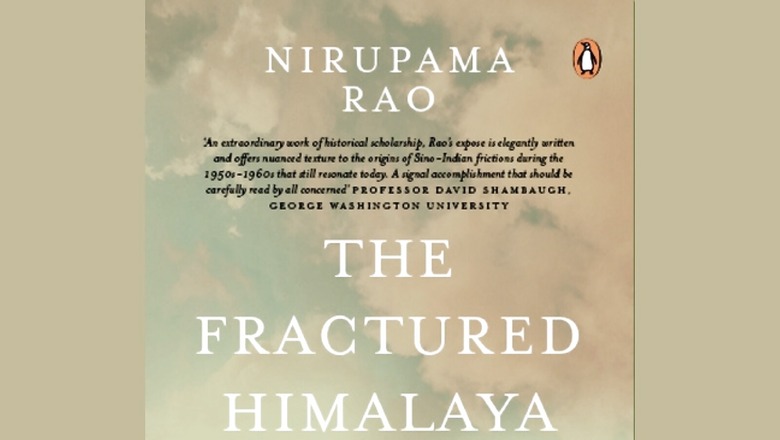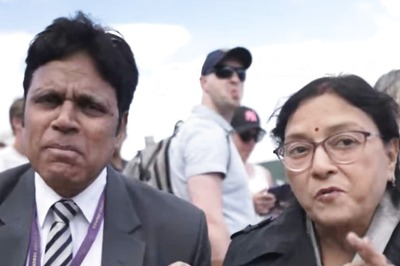
views
Fateful decisions precede fateful events. In the early phase of the dispute with China in 1958–59, India had sought to deploy a policy of ‘persuasion and argument’. After the Kongka Pass incident of October 1959, public opinion in India became a strong pressure point on the Indian Government leading to a distinct element of unwillingness to yield on the border question. A shifting Chinese claim line in Ladakh then occasioned the launch of the Forward Policy of ‘non-violent military pressure’ from November 1961.
Was India’s conflict management hobbled by an unwillingness to negotiate with China and to understand that such negotiations would involve an element of give-and-take? By a repetitive insistence that China should withdraw from territory in Ladakh in order to consider ‘border claims in the light of historical evidence’, was the problem further accentuated? On the other hand, China had developed a different conception. The Chinese approach was to seek Indian acceptance of China’s military occupation of the Aksai Chin and eastern Ladakh and then achieve a barter arrangement involving the western and eastern sectors of the boundary (China being the ‘beneficiary’ in the west and India in the east, south of the McMahon Line).
Were the Chinese preparing for war with India? Contrary to the belief among Indian policymakers that war was most unlikely, the historical record as revealed today, suggests otherwise. Here again, the Tibetan connection is intrinsic to our understanding of the problem. The Chinese had begun to augment their military presence and capabilities (including logistical) with the advent of the Tibetan resistance in 1956. The military action taken to quell the revolt lasted almost six-and-a-half years from 1956 to 1962.
‘Military action in Tibet is a key to understanding the border conflict with India,’ this author was told in 2014. For the Chinese, this was the largest military action involving the PLA after 1949. It involved the use of Soviet-made aircraft to bomb the Tibetan rebels and monasteries in Kham and Amdo. The 54th Army that had fought in Korea was sent to Lanzhou in western China in 1958 and trained there for action in Tibet. After two months of training, they were sent to Qinghai (Amdo), operating between altitudes of 2,000 to 4,000 m. In 1959, according to the same source, the 54th Army was sent to central Tibet and areas close to the Indian border. In March of the same year, Lhasa itself was the scene of fierce battles involving Chinese troops and Tibetan rebels around the time of the flight of the Dalai Lama to India. Mao Zedong himself is understood to have sent three telegrams to force commanders in Tibet, welcoming the Tibetan rebellion because it was an opportunity to ‘train our army’, the army in focus being the 54th Army.
By the summer of 1962 the army was fully trained, its endurance levels at a high, and adequate ammunition stocks available for use in new combat situations. A report from the Consulate of India in Lhasa for the month of April 1961 noted that ‘the Chinese cadres and troops in Lhasa are reported to be casually discussing the invasion of India by the Chinese.’ A further report for May of the same year said, ‘a casual source mentioned having heard that Mon-Tawang area (NEFA border) was concentrated with Chinese troops, guns, heavy artillery and anti-aircraft guns. The impression in the area, according to this source, was that the Indian side is well-defended and that many Tibetans were escaping from Tsona area into NEFA without the Chinese bothering them.’ A report for July 1961 stated that ‘It is more or less confirmed that two three Dakotas have been landing daily with troops and goods at Dam air field. The planes, it is stated, do not halt there for long but take off immediately. On July 16, three Dakotas are stated to have landed there with armed PLA, who also carried some weapons answering the description of small mortars. The said PLA … left for unknown localities presumably in Western Tibet.’
This is where the theory that India’s so-called Forward Policy ‘provoked’ the Chinese into conflict bears scrutiny. Contradicting the ‘deeply flawed’ arguments put forward by authors like Neville Maxwell, in 2014 the media correspondent, commentator and author Bertil Lintner called for putting the 1962 border war in context and keeping the internal political situation in China always in focus. In 1959, Mao had launched the Great Leap Forward, a disastrous foray into ‘modernizing’ China. By 1961, millions of people (estimates vary from 18 to 32 million) had died as a result of Mao’s policies. As Mao’s power faced eclipse, his stratagem was to unify the country against an outside enemy. India was a ‘soft’ target, having granted the Dalai Lama asylum for one. Attacking India was not a spur-of-the-moment decision provoked by the Forward Policy.
ALSO READ | In LAC Tensions with China, Why India Must Keep a Close Watch on Chicken’s Neck
Lintner points to what China did in the years before the 1962 war, besides military action against Tibetans inside Tibet. In January 1961, ‘a combined force of three divisions, of 20,000 men, of regulars from the Chinese PLA launched a very similar attack across the northeastern border of Myanmar. The target was a string of secret, Nationalist Chinese Kuomintang camps on the Myanmar side of the border from where they had launched raids against China.’ No Myanmar government had acknowledged this operation, Lintner observed. The operation was code-named ‘Mekong River Operation’, it was swift and over within weeks. Once it was finished, the Chinese troops withdrew to their side of the border. In Lintner’s view, the Mekong River Operation was a ‘rehearsal’ for what happened with India in 1962.
This excerpt from The Fractured Himalaya: India Tibet China 1949-62 by Nirupama Rao has been published with the permission of Penguin Random House
Read all the Latest Opinions here




















Comments
0 comment